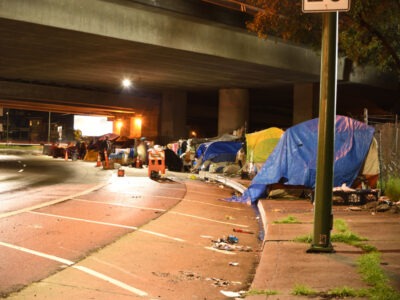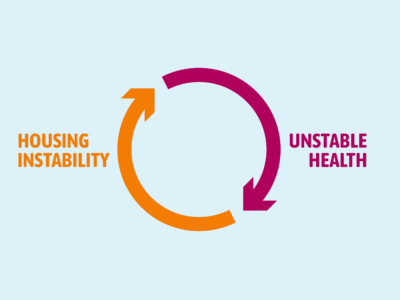As of 2018, researchers have estimated that over 700,000 adolescent minors, or 1 in 30 of the population of 13- to 17-year-olds, have experienced homelessness. These numbers are even more alarming when looking at young adults ages 18-25, of whom approximately 3.5 million, or 1 in 10, have experienced homelessness.
Furthermore, these rates are even higher for LGBTQIA+ and BIPOC youth, who have a 2.2 times and 1.8 times greater risk of experiencing homelessness compared to all other youth, respectively.
Community Solutions and Built for Zero currently support more than 30 U.S. communities working on youth homelessness efforts. To elevate effective practices and approaches across the broader homeless response sector, we engaged ORS Impact, a strategy and evaluation consulting firm, to conduct a current state assessment of youth homelessness.
The Current State of Youth Homelessness Approaches report outlines interventions, practices, and broader strategies to prevent, reduce, and end youth homelessness.
The final product details ORS Impact’s approach to the project, select insights and recommendations from their assessment, and detailed appendices with further information.
New Supplemental Technical Appendix
The Built for Zero Youth Homelessness Assessment – Supplemental Technical Appendix is a technical summary focused on various approaches to addressing youth homelessness. It includes detailed insights into different intervention types such as case management, direct funding, housing support, outreach, family strengthening, individual counseling, economic support, and prevention. Each section outlines the definition, effectiveness evidence, implications, and examples of specific programs or models. It also discusses future research needs for each approach to better understand their impact on reducing youth homelessness.
Key insights and recommendations from the Current State of Youth Homelessness Approaches report include:
An inclusive, nationally recognized, and widely adopted definition of youth homelessness is needed.
- A lack of a single definition creates challenges.
- Narrow definitions create challenges for youth who do not meet the criteria.
- Broader definitions are not yet actionable.
Youth homelessness interventions must be responsive and relevant to individual needs, and providers must move away from adultism.
- Personalized care, trust-building, consistency, and youth-empowered decision-making are crucial.
- Diversion programs can empower youth “at the door.”
- Client-directed wraparound services like counseling, job training, and treatment help stabilize youth.
A coordinated response to youth homelessness is essential.
- Silos must be broken down between foster care, youth justice, education, and health care systems.
- Organizations must lay the foundation for sharing data, information, and resources to build a coordinated service response.
Different subpopulations of youth (LGBTQIA+ and BIPOC) require tailored approaches and cultural competency.
- There is a need for safe and affirming spaces.
- Services should also be provided for young parents.
- BIPOC youth must be centered.
Guiding principles from youth homelessness efforts could help inform efforts with adult populations.
- Infrastructure needs to be developed for sustainable work.
- Voices of clients served should be centered.
- Organizations must integrate a focus on prevention.
Conversations lifted up several broader resource needs for the field.
- There needs to be a shift from general to tailored approaches.
- The focus should be on trauma-informed care and cultural competency.
- Systems should align around data.
- More training and research is crucial.
- More flexible funding is needed.
Acknowledgments
We are immensely grateful to the youth with lived experience, community leaders, and organizational leaders who participated in the interviews and focus groups to inform this report. Their willingness to participate, insightful perspectives, and compelling testimonies were paramount in creating this content.
We also want to thank the funders of this work, whose financial support and ongoing input enabled the collection and analysis of data from a wide diversity of sources. The generosity shown by the Conrad N. Hilton Foundation, Raikes Foundation, Schultz Family Foundation, and The Annie E. Casey Foundation has been critical in ensuring that this work could take place and that the content generated could be disseminated broadly for the field.
The findings and recommendations presented in this report are those of the authors alone, and do not necessarily reflect the opinions of the funders.
Defining youth homelessness
As communities make progress in reducing youth homelessness, we developed a functional zero definition for this population.




